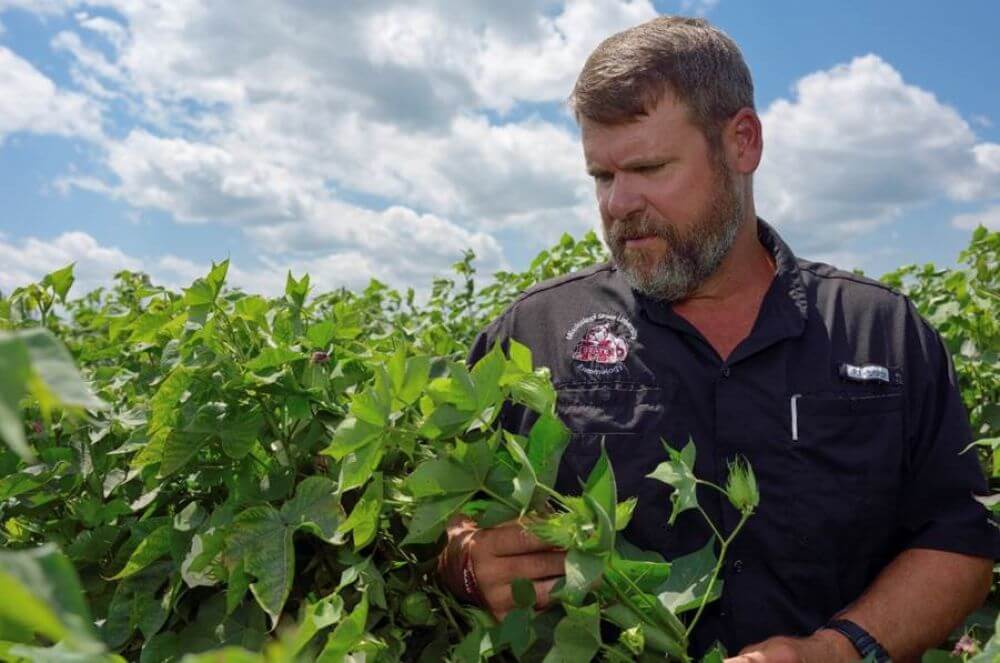
Early Season Management Strategies Pay Harvest Dividends
Setting up a successful cotton crop is much like setting up a slinky at the top of the stairs. If it doesn’t get off to a good start, the slinky will start to stumble and waiver halfway through its course with a somewhat disappointing result.
The same could be said about a cotton crop. Early season decisions are absolutely critical to reach a successful harvest.
Overcoming Early Season Obstacles
Aside from variety selection, early season pest control is the foundation for forward positive motion as the seed germinates and the seedling pokes through the soil to begin its journey. Before the seedling even gets to the point of sunlight, it encounters incredible obstacles such as nematodes and seedling disease.
Nematodes are perhaps the most insidious threat. While there are several species that impact cotton across the Cotton Belt, the two most detrimental are reniform and root-knot.
“In Mississippi, although both species are present, we tend to have more issues with reniform than root-knot because they are found on more acres,” says Dr. Angus Catchot, Extension Professor with Mississippi State University. “Both can be extremely yield limiting when numbers are high.”
Unless growers sample fields for nematodes on a regular basis, it’s difficult to detect and quantify. Often, the presence of reniform manifests itself in a slow decline of crop vigor which ultimately can lead to yield loss. Often these problems gradually get worse over a period of years if control strategies are not implemented.
The First Step
Varietal selection is one option.
“In Mississippi, most of our varieties with nematode resistance are tied to root-knot nematode,” Catchot says. “However, there are a lot of efforts from seed companies to find and commercialize varieties with reniform resistance. Even if you have a nematode resistant variety, it may not be enough protection under severe populations.”
Nematicide seed treatments are another possibility, but have limited efficacy, especially under heavy nematode pressure.
Yet another option is soil applied fumigants. “Realistically, fumigation is just not typically economically feasible when you’re talking about cotton,” Catchot says. “In-furrow, at-plant treatments for nematodes just make more sense from an economic standpoint in a lot of situations.”
One of those in-furrow, at-plant options is AgLogic aldicarb pesticide. Aldicarb first hit the agricultural pest protection market more than 40 years ago under the brand name “Temik”.
Today, marketed as “AgLogic”, the product is the same formulation, same expectations, and the same consistent results trial after trial as we saw years ago.
“AgLogic is always a top performer in our University and cooperator field trials,” Catchot says. “It still looks as good as it ever did. It’s the same story now as it was years ago. The cotton gets off to a better start, and we don’t have to work as hard to control the pest problems that come later.”
Another Step to Thrips Protection
What inevitably comes soon after a cotton seedling’s emergence are thrips.
“You can almost always count on some sort of problem with thrips once the seedling emerges,” Catchot says. “You never really know how bad it’s going to be, but you know you better watch out for it.”
When Temik aldicarb was absent from the market for several years, growers were forced to rely exclusively on seed treatments and/or foliar insecticides after emergence, according to Catchot. “It didn’t take long for resistance to set in, and seed treatments and foliars became progressively less effective due to resistance to the neonicotinoids and other products.
“AgLogic aldicarb has been a welcome addition back into our nematode and thrips management program,” Catchot says. “Not only does it reduce nematode pressure, it also reduces the thrips population and takes pressure off the need to use foliars after emergence.”
Healthier, Earlier Fruit Set
After the perils of pre-emergence and early season pest pressure, secondary pests typically emerge as the next threat to cotton yield. Spider mites and aphids are common pests that can actually become worse after broad spectrum foliar sprays eliminate beneficial insects. Flaring these pests can actually lead to even further sprays.
“By reducing the need for foliar sprays, the threat of flaring spider mites and aphids is reduced when a grower uses AgLogic aldicarb. In fact, aldicarb has activity on both of these pests.” Catchot says. “Getting a good start out of the ground leads to a healthier plant and it’s very reasonable to assume a healthier plant is more capable of fighting off secondary pest threats as the crop progresses.”
Getting a good start coming out of the ground sets the stage for the whole season and have been proven time and time again as a precursor to stronger yield potential.
“I would say AgLogic aldicarb is somewhat of a niche market in the Mid-South right now,” Catchot says. “But the growers who use it know how it pencils out – especially when they run that picker through the field at the end of the season.”
It’s the “slinky effect”. Strong, well-planned, early season steps to a promising finish. When you were a kid, it made you jump up and down. Now it makes you smile on the way to the bank.
Originally Published in February Issue of Delta Farm Press